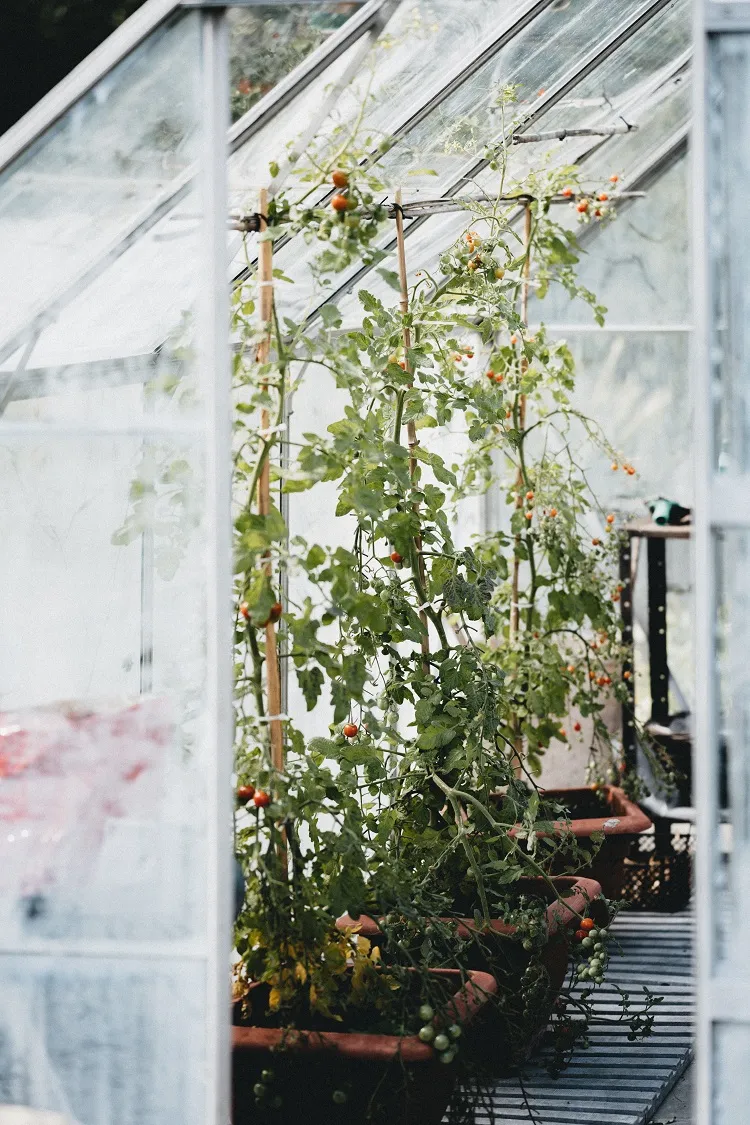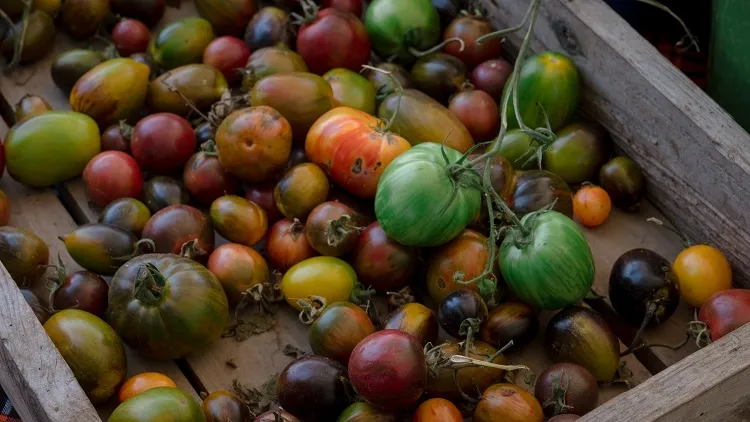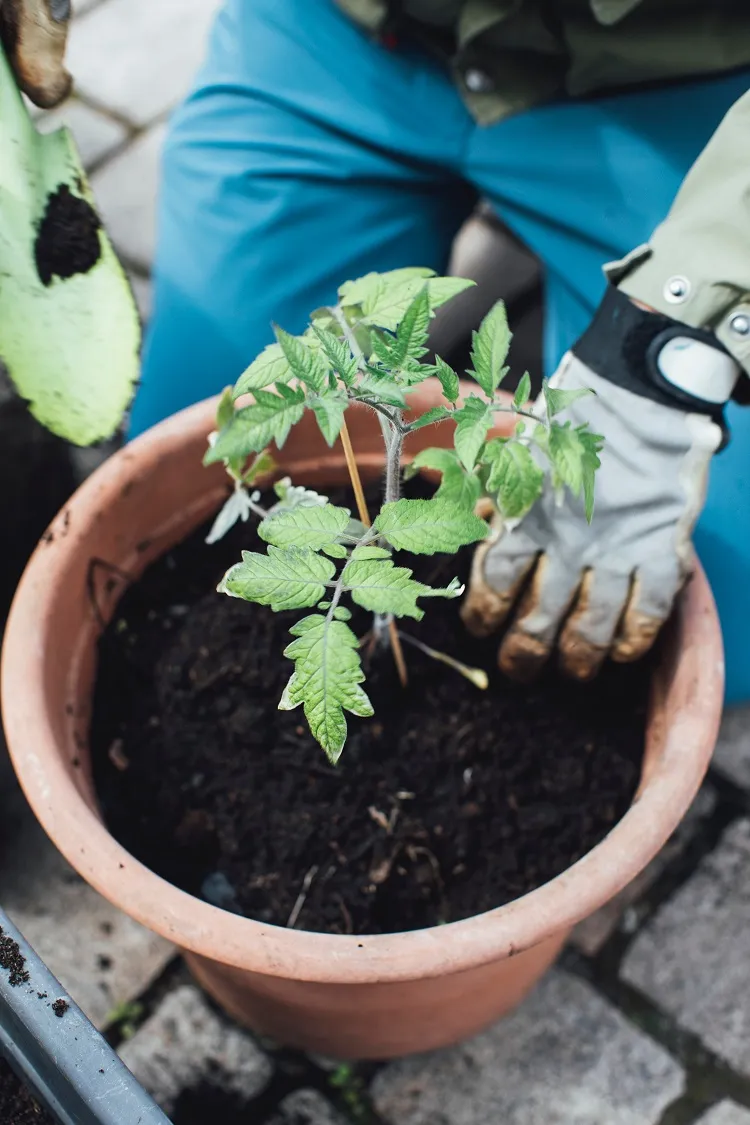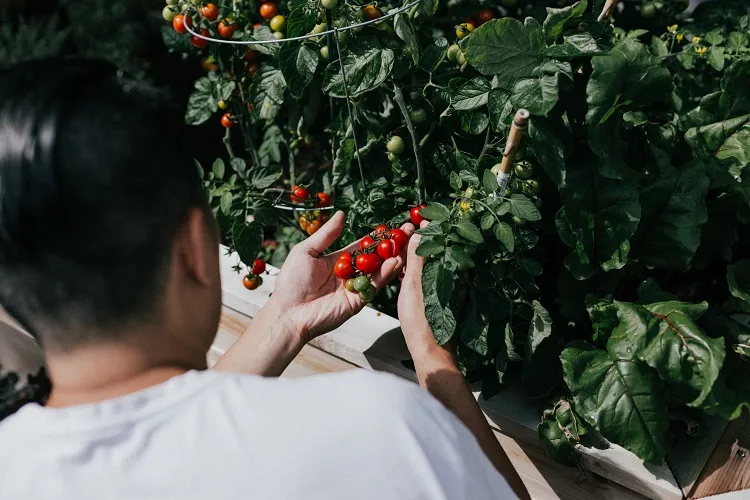Tomatoes are one of the most commonly used fruits in every kitchen, and also one of the easiest ones to grow! Whether you’re a professional chef, or just enjoy the taste of summer that tomatoes deliver with every bite, this is an essential fruit for everybody’s gardening plot (or box). There’s simply no place for comparison when it comes to eating home-grown tomatoes in lieu of store-bought ones. While this red fruit is most suitable to grow outdoors in a warm climate, as it can take up to 3 months for the seed to grow into a plant, there are many ways you can take that process indoors – you’ll just have to recreate the outdoor conditions at home. A little heads-up – the leaves and stems of the tomato plant contain some toxins, so be wary of that when taking the growing activity at home and make sure no cats, dogs, or any other curious pets have access to them. As long as you have plenty of natural light coming into your home, good air circulation, and don’t forget to water them regularly – you too can bear the fruits of this favorable plant. Without further ado, here are all the dos and don’ts of growing tomatoes for fresh produce all year round!

How do I Grow my Own Tomatoes?
The first thing you need to do is decide what kind of tomatoes you’re going to plant. The best varieties to grow indoors are the small-fruited plants such as Tommy Toe or Yellow Pear. There’s also a hybrid plant called Micro-Tom which produces a couple of dozen of super tiny tomatoes. A good option for those of you who can’t maintain a warm indoor temperature all year round is the Siberia tomato plant, which grows perfectly well in cool weather. Once you’ve made your pick, the next thing you have to do is create the perfect conditions for your seeds to grow into fruitful plants.

Sunlight vs Artificial Lighting
You simply can’t grow a tomato plant without at least 6 – 8 hours of sun exposure a day, so make sure that your plant is placed near a south-facing window in order to absorb as much natural light as possible. The best temperature for growing tomatoes is between 70° – 75 °F (21 – 26 °C), so if you’re unable to maintain such temperature at all times, you’ll have to opt for artificial lighting. Simply place a grow light over the plants – about 1–2 inches (2.5 – 5 cm) above the seeding – and leave it on for at least 17 hours a day.
How to Water your Tomato Plant?
This is probably the trickiest part of the home-growing process, as tomatoes need a lot of water, however, the soil should not be soggy. If you’re planting the seeds in a big planter, it’s good to use drip irrigation. If you’re planting in a pot or smaller box, you have to make sure that you’re watering the plants slowly and directly into the soil. Try to keep the water off the leaves, as this can cause the development of bacteria and plant diseases.
Good Air Flow
Humidity is not an issue for tomato plants, however, you need to maintain specific levels and protect the plants from extreme weather amplitudes. If the humidity is too low, it will slow down the growing process because the plants will be unable to access the water and nutrients from the soil. Inversely, if the humidity is too high this may lead to fungal issues, such as botrytis and powdery mildew. During the daytime, the ideal humidity levels are between 80-85%, while at night the perfect cultivation humidity would be around 65-75%.
Use A Lot of Fertilizer When you Grow Tomatoes Indoors
If you’re planting your tomato seeds in a pot, you’ll have to use more fertilizer than usual, as these plants are heavy feeders. They need to be fertilized every week, preferably with organic plant food, or homemade fertilizer. Simply mix water with a tablespoon of Epsom salt, put the mix into an empty spray bottle, and spray it onto the plants.
How to Prune and Maintain the Plant?
Pruning allows the plant to produce larger fruit. This isn’t essential for determinate varieties, however, the smaller stems of the indeterminate varieties can benefit from this process as they usually aren’t very fruitful.
How to Grow Tomato Seeds?

The easiest way to plant tomato seeds is by using organic peat-seeding pots because once the seeds have grown to plants big enough to move into a larger container, these are quite easy to remove the plant from. To speed up the growing process, you can use a seed-starting mix. Prepare the soil by watering it with a spray bottle. Once the pots start feeling heavy, make little holes into the soil and put the dry tomato seeds inside. After that, spray some more water on top. Your plants are ready to move into a bigger pot once you see the first true leaf. It usually takes around 7–14 days for a tomato seed to sprout, depending on the weather conditions.
How to Grow Tomato Plants in Pots?

The root system of the tomato plant is quite broad, so make sure you choose a big pot – at least 1 sq. foot. Choose a container with good drainage because this fruit plant does not like soggy roots! Quick tip – avoid black pots, as they attract a lot of sunlight, which can lead to overheating of the roots.
Pick the Right Soil
Garden soil can be too heavy for pots, so instead, choose potting soil. The biggest advantage of growing your tomatoes in a pot is that it’s much easier to prevent diseases and pests, as potting soil allows for good air and moisture circulation.
Add Support and Coverage
It’s good to use a tomato cage when planting determinate types when planting each tomato. Make sure you do that at the beginning, because if you add the support system later, you may affect the growing process of the roots. In order to keep the soil moist, make sure you leave some space to add mulch on top of the soil. You can use chopped leaves, shredded bark, or non-glossy paper.
Harvesting the Tomatoes

The easiest way to know when your tomatoes are ready to harvest is by their color. If this is your first time planting tomatoes, a good trick to check the ripeness of your fruit is by touching them. Give them a gentle squeeze – if they are slightly soft, that means they’re ready to harvest. Don’t forget to hold the stem as you’re pulling off the fruit!
Common Mistakes When Planting Tomatoes at Home

Just like with everything else in life, you’re probably going to make some mistakes at the beginning until you find your way around home gardening. Let’s try to avoid as many mistakes as possible and take a look at the most common errors when it comes to planting tomatoes.
Wrong Plant Spacing
When you set out your plants too closely, you restrict the air circulation, which will lead to fewer fruit production. If you’re growing your tomato plants in a planter, it’s good to have at least 18 inches (45 cm) spacing between each plant.
Watering Too Often
I know you want your plant to be as nourished as possible, but there is such a thing as too much. The best way to know if your plant needs watering is by checking the soil. Put your finger an inch deep into the soil and if it’s dry, that means your plant is thirsty.
